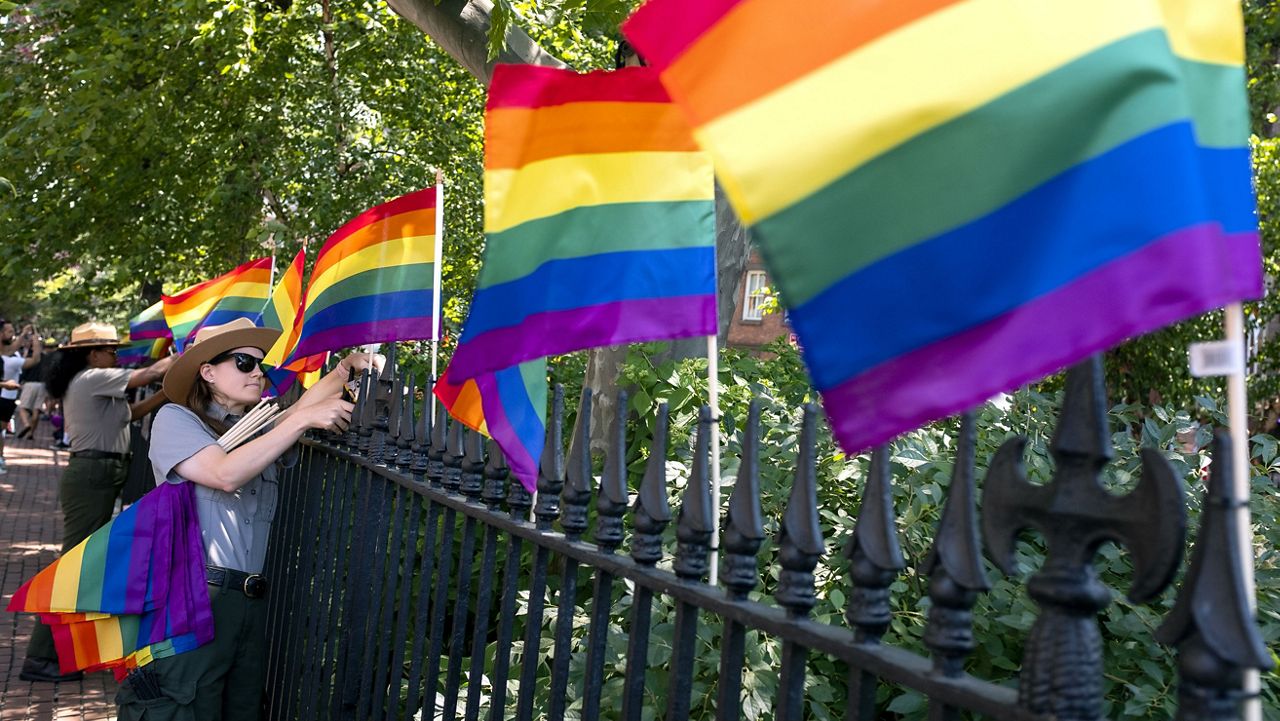The amount of U.S. adults who identify as lesbian, gay, bisexual, transgender, queer or otherwise non-heterosexual has more than doubled in the past decade, according to a new Gallup poll published Thursday.
In 2012 – when Gallup first conducted a survey of how many Americans identified as something other than heterosexual – around 3.5% of respondents self-identified as a member of the LGBTQ+ community. That number has now doubled to 7.1%, thanks in large part to how younger generations self-identify compared to older Americans.
The results come from a 2021 telephone survey of over 12,000 U.S. adults, over 86% of whom said they were straight or heterosexual; another 6% did not offer a response.
Generation Z, or those born between 1997-2003, has the highest proportion of individuals who identify as non-heterosexual compared to other age cohorts at roughly 21% of the total respondents. That number is nearly double the amount of Millennials, the closest age group to Gen Z with individuals born between 1981-1996, who identify as such, with just 10% of the age group identifying as non-heterosexual.
The gap widens even further between Gen Z Americans “compared with the older generations they are replacing in the U.S. adult population,” the Gallup poll found in part.
The amount of Americans older than Millennials who identify as non-heterosexual has not changed much since Gallup began conducting the survey a decade ago, but there has been a “modest uptick” for Millennials who identify as such – up from 5.8% in 2012 to 10.5% now.
The same can be said for Gen Z, although the increase from 10.5% to 20.8% who identify as members of the LGBTQ+ community can be attributed, in part, to the fact that only a small portion of Generation Z had turned 18 when the poll was conducted in 2012.
“The sharp increase in LGBT identification among this generation since 2017 indicates that the younger Gen Z members (those who have turned 18 since 2017) are more likely than the older members of the generation to identify as LGBT,” Gallup found, noting there are still members of Gen Z who have yet to reach adulthood.
The most common self-identification for those in the LGBTQ+ community was bisexual, with over 57% of those respondents identifying as such, a number that is roughly equal to 4% of the total adult population in the U.S.
Gallup also noted that Gen Z has the benefit of growing up in a world that is much more accepting of the LGBTQ+ community than for prior generations. Gay marriage, for example, was only legalized at the federal level in 2015. And still, a wave of anti-LGBTQ legislation crept into state and local legislatures over the course of the past year, a changing tide noted by activists and politicians alike.



